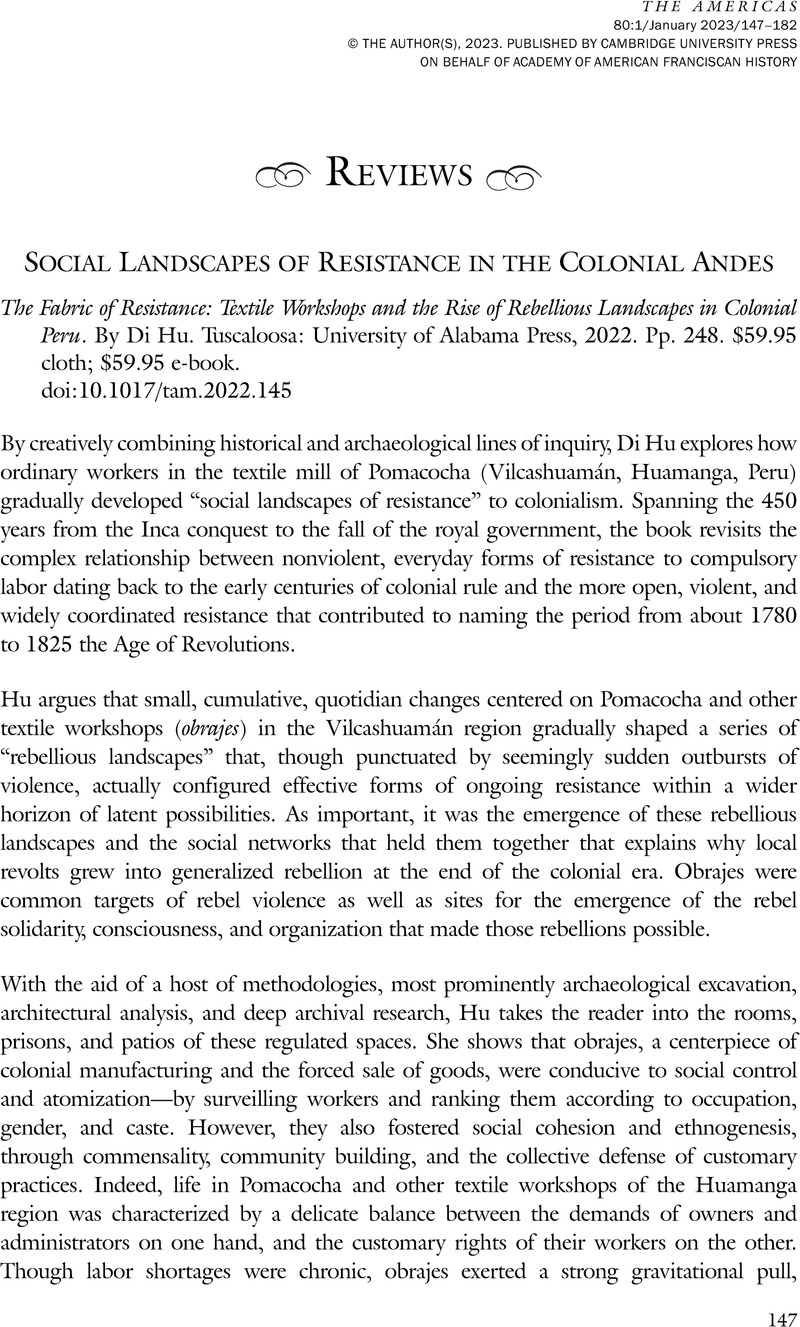No CrossRef data available.
Article contents
Social Landscapes of Resistance in the Colonial Andes - The Fabric of Resistance: Textile Workshops and the Rise of Rebellious Landscapes in Colonial Peru. By Di Hu. Tuscaloosa: University of Alabama Press, 2022. Pp. 248. $59.95 cloth; $59.95 e-book.
Review products
The Fabric of Resistance: Textile Workshops and the Rise of Rebellious Landscapes in Colonial Peru. By Di Hu. Tuscaloosa: University of Alabama Press, 2022. Pp. 248. $59.95 cloth; $59.95 e-book.
Published online by Cambridge University Press: 10 February 2023
Abstract
An abstract is not available for this content so a preview has been provided. Please use the Get access link above for information on how to access this content.

- Type
- Book Review
- Information
- Copyright
- Copyright © The Author(s), 2023. Published by Cambridge University Press on behalf of Academy of American Franciscan History


